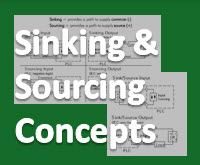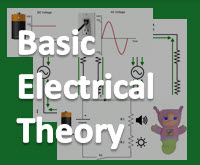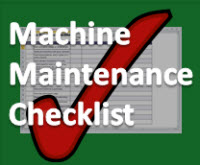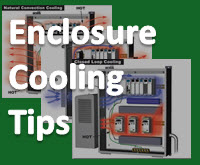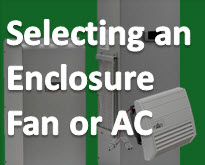So what do you think, is this glass half full or half empty? For me, that could be a little difficult to answer and could vary based on the day I’m having, but if we are asking about the level, why not let the PLC answer? In fact, why not have the PLC tell us…
When choosing the type of input or output module for your PLC system, it is very important to have a solid understanding of sinking and sourcing concepts. Use of these terms occurs frequently in discussion of input or output circuits. It is the goal of this post to make these concepts easy to understand, so you can make the right choice the first time…
So you found a task that you’d like to automate but you need a way to sort out what pieces are needed and how they fit together. At this phase of development, organization is key. When specifying a project, staying organized can keep you on track and help you see the big picture. Flow charts,…
No single discovery has affected our lives, our culture and our survival more than electricity. Electricity is everywhere; it lights our way, cooks our food and can even brush your teeth. For an example, imagine where the medical field would be without electricity and in that sense how many lives have been saved due to…
+Tech TopicsApplicationeBookeBook Landing PagesFacilitiesIndustryLearning ResourcesMachine ControlOnline Only
Machine Maintenance Checklist
It is important to develop a routine maintenance schedule for your automated control system. Having a routine schedule for checking critical components and devices in the system will increase the longevity of the system and more importantly, it will help reduce future problems. Set up the schedule based on a monthly or quarterly time period,…
There are four basic motor control options available: Basic contactors, traditional starters, manual motor starters, or combination starters. A basic contactor is a special purpose relay that is used to control large electrical currents. Similarly, a traditional starter utilizes overload relays, auxiliary and alarm contacts, and mechanical interlocks to create a reversing unit. On the other…
You need to cool down – Heat inside an enclosure can decrease the life expectancy of controlling units such as your PLC, HMI, AC drives and other items. Excessive heat can cause nuisance faults from your electrical and electronic components: for example, overloads tripping unexpectedly. Heat will also change the expected performance of circuit breakers and fuses, which can cause whole…
Automation NotebookeBookeBook Landing PagesEnclosures & AccessoriesLearning ResourcesOnline OnlyProduct
Selecting an Enclosure Fan or Air Conditioner
Internal and External sources often cause enclosure internal temperatures to rise above the ratings of the control equipment. Internally, the same items that can be damaged by heat (power supplies, PLC systems, AC drives/inverters, HMI systems, battery back-up systems, servos, etc.) may also be the source of the heat. Externally, sources of heat that can
Heat inside an enclosure can decrease the life expectancy of controlling units such as your PLC, HMI, AC drives and other items. Excessive heat can cause nuisance faults from your electrical and electronic components. Heat will also change the expected performance of circuit breakers and fuses, which can cause whole systems to shut down unexpectedly.
Automation NotebookCommunicationsCover StorieseBookIssue 27 – 2013Learning ResourcesNotebook IssueProduct
Industrial Ethernet or Fieldbus Network?
With only about a quarter of the overall installed base of industrial networking using 4-20 mA and other hardwired methods, fieldbus communication systems are becoming the de facto choice for automation. Now the debate is shifting to the question of whether fieldbus-based networks will remain the standard or if it will be supplanted by industrial…



